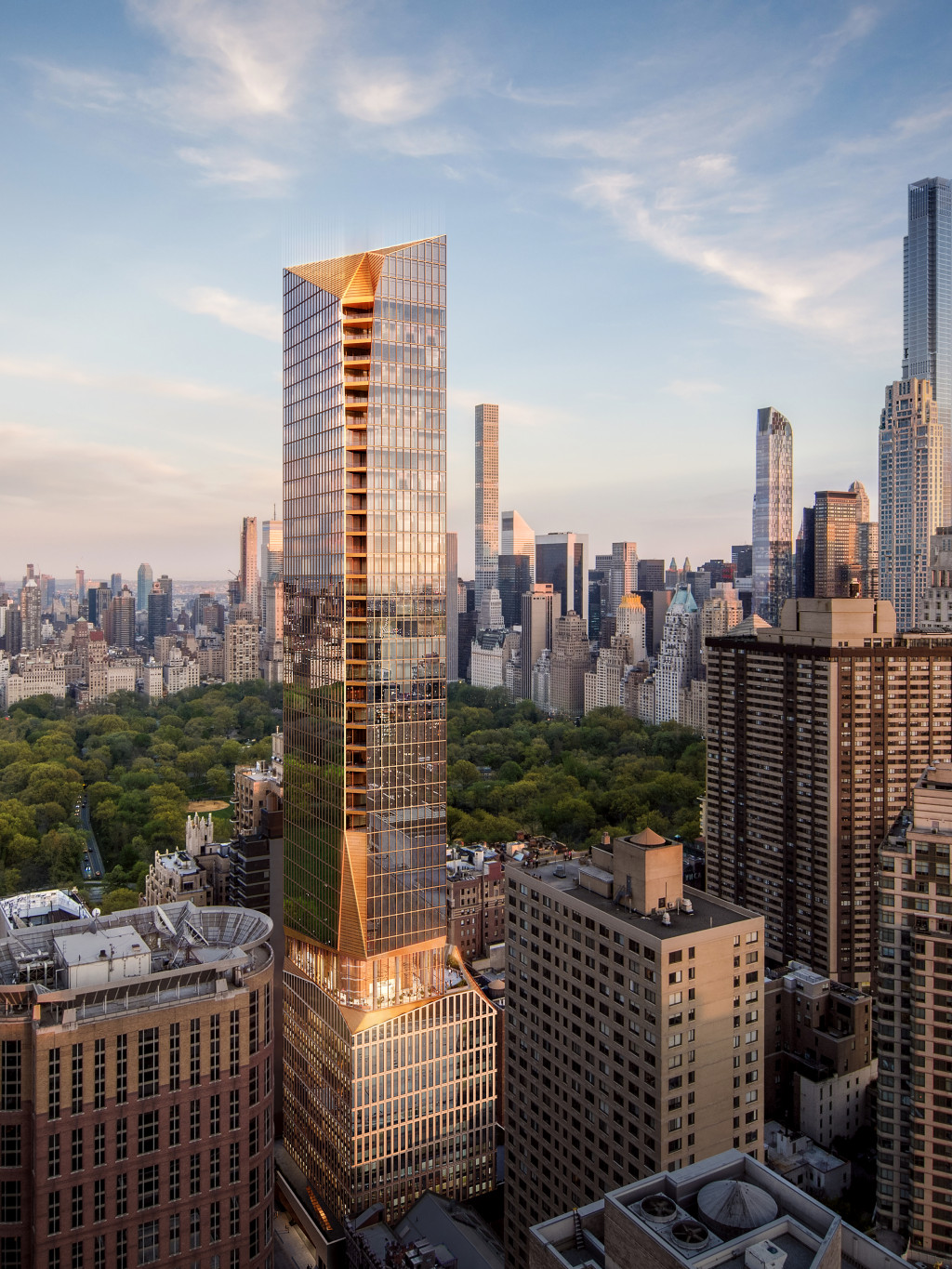It looks like the fate of 50 West 66th Street, the 775-foot-tall, Snøhetta-designed condo tower on Manhattan’s Upper West Side, is far from settled. On September 22, a state Supreme Court judge ruled against developer Extell and pulled the building’s previously awarded Department of Building (DOB) permitting.
As a refresher, 50 West 66th Street, first revealed to the public at the end of 2017, tops out at only 39 stories thanks to a 192-foot-tall central mechanical void. Local community opponents argued the gap exists solely to boost the tower’s height (and correspondingly the price of top floor units), as such voids don’t count towards a building’s occupiable floor space. Although the city ultimately closed the loophole, spurred on by complaints about 50 West 66th Street in particular, in January the Board of Standards and Appeals voted to allow the project to move ahead as it was submitted before the zoning change that limited residential voids to 25 feet, and Extell cut the void height to 176 feet.

That obviously didn’t sit well with Upper West Side residents, and the most recent lawsuit brought by the preservation-minded nonprofit City Club of New York (no stranger to battling high-rise development) was ultimately successful. In his ruling, State Supreme Court Judge Arthur Engoron wrote:
“Every government, including, of course, New York City, has the right to limit the height of buildings. The rules here at issue are designed to do just that, to limit the height of buildings, that is their raison d’etre. Of course, the other side of that coin is that developers have the right to build as high as they want, unless there is something limiting them. Super-tall buildings have obvious advantages (economic, social, esthetic, environmental) and disadvantages (neighboring views, light, air, a different esthetic), and this Court is not called upon, and is not, weighing or passing judgment on them, a task for the legislative and executive branches of government. […]
Here’s the rub: the subject Permit considers all floor area, in both portions of the Lot, that is below 150 feet to be part of the base, for purposes of calculating the 60-40% Bulk Distribution Rule, but only considers the ground area of the C4-7 portion of the Lot, not also the ground area of the R8 portion of the Lot, for purposes of calculating the 30% Tower Coverage Rule. This is immediately suspect, violating that old legal maxim, “Sauce for the goose is sauce for the gander.”
Essentially, “tower-on-a-base” schemes must have 60 percent of their massing on the podium and 40 percent towards the slender tower above at maximum, which Judge Engoron ruled 50 West 66th Street violates. Additionally, he called it a “blatant” and “brazen” attempt to artificially boost the building’s height, saying “No sane system of city planning, and no sane system of judicial adjudication would allow developers to end-run around height-limits by including in buildings gargantuan mechanical spaces that may not even contain mechanical equipment and have no purpose other than to augment height beyond otherwise legal limits.”
Construction on the tower, which was already progressing slowly, has now been halted entirely for time being.
In a statement provided to Gothamist, Extell vowed to appeal the ruling:
“The court’s decision overturns a unanimous,” said the representative, “well-reasoned decision of the New York City Board of Standards and Appeals (BSA), the expert body which correctly concluded that Extell’s building plan complies with all applicable zoning regulations.”











